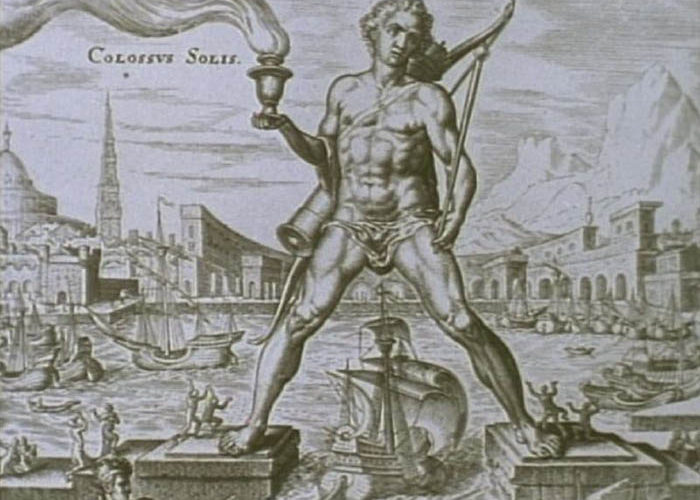The Greek island of Rhodes is a very popular holiday island. Among other things, it has many great beaches, coastal landscapes and historical sights. However, a long time ago there was a metre-high statue on the island’s coast, also known as the Colossus of Rhodes. It is also one of the 7 wonders of the ancient world and was the largest bronze statue at that time. However, there is nothing left of it today. I will explain the reasons for this later. In general, the statue was 36 metres tall. The statue was built by the ancient Greeks as a statue in honour of the god Helios. According to Greek mythology, Helios is the sun god. Rhodes was also named after the nymph Rode (Rose), who was supposed to live on the island and was very much in love with the sun god. Thus, the god is said to have helped the city fight for its city of Rhodes on the island. The city was in fact attacked at the time by a king named Demetrios Polykletes from Asia Minor, who later occupied and captured it. He was a powerful king of Phrygia and Lycia. However, the king’s territory now belongs to modern-day Turkey. In fact, the king gave up the battle for the city of Rhodes on the island in 303 BC after more than a year. He increasingly distanced himself from his warlike plans.
In gratitude for the support of the god Helios, the statue was then built by the ancient Greeks. The construction of the tall statue took a total of twelve years. Accordingly, it was built between 292 and 280 BC. The builder of the statue is said to have been Chares of Lindos. He was a famous sculptor from Lindos.
The statue was also built from the inside with stones by artists and craftsmen to give it more stability. On the outside, however, a lot of bronze was added. The location on the island and the appearance of the statue is still not known for sure.
Of course, there are also pictures of the dam. However, these do not show the original image of the colossus. No ancient images of the statue have been found so far. The famous pictures of the statue were only painted by painters who imagined the Staute themselves. Among other things, the pictures show the Staute with its legs stretched out and serving as a gateway to the harbour entrance. Under the legs, ships can be seen passing under the statue and entering the harbour. From today’s perspective, however, it is clear that this could not have been possible. The statue would otherwise have collapsed. Furthermore, the pictures show the Colossus of Rhodes holding a pointed arrow in one hand. On the other hand, however, a chalice is held high. The chalice is pointed upwards into the sky with an outstretched hand. At the back of the statue a bundle of arrows can be seen, which are in a bag tied around the body with a belt.
The Staute is thought to have stood instead in a similar way to the Freedom Staute in New York. Why is the Staute no longer standing? After 66 years, the Staute collapsed due to an earthquake. The bronze of the dam was later removed and melted down.
Sources:
https://www.britannica.com/topic/Colossus-of-Rhodes
https://www.history.com/news/what-was-the-colossus-of-rhodes

